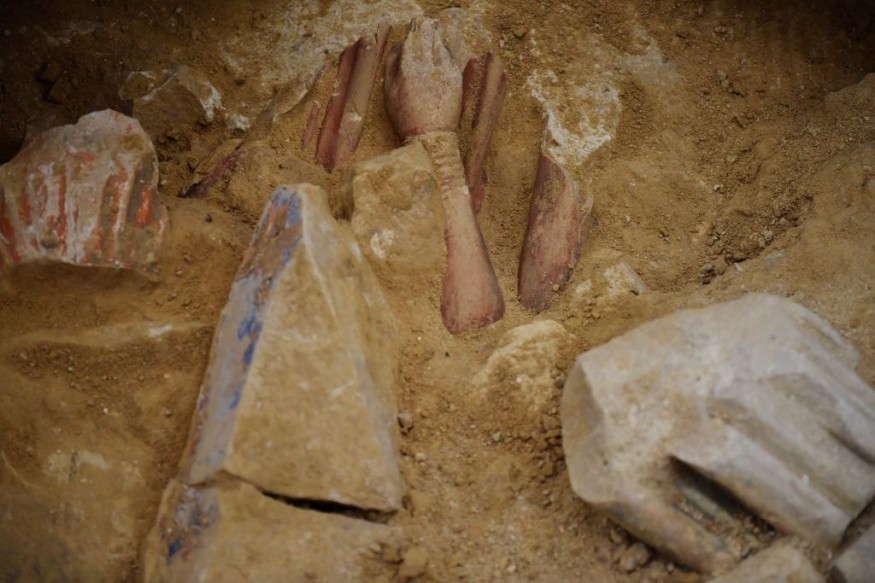Heavy sarcophagus and other tombs were recently unearthed in the famous cathedral of Notre Dame in Paris. According to archaeology experts, the artifacts date back to the 14th century. The tombs were excavated unknowingly during the church's repairs following the devastating fire that consumed the entirety of its structure.
Archaeologists consider the new findings as one of a kind, as the collection shows a scientific quality that stretches far from the ancient history of the church.
Notre Dame Cathedral's Hidden Coffins and Original Artifacts

The tombs were dug as the Notre Dame cathedral underwent repair works after the large fire that almost destroyed the Paris heritage in 2019.
The discovery was made during the reconstruction of the church's spire, located at the central part of the building and right above the central intersection between the cathedral's nave and transept.
The recent excavation brought up not just ordinary tombs but a lead-based sarcophagus that was modeled with a human-shape design.
Experts theorize that the coffins unearthed in Notre Dame's grounds were purposely made for the elders with special ranks who lived throughout the 1300s. The estimated age of the remains was approximately a hundred years following the initial construction of the church.
Alongside the tombs, the Notre Dame's internal perimeter revealed painted sculptures that served as the original pieces erected at the cathedral's rood screen during the 13th century. This architectural element separates the church's nave and the altar area.
@twitter|https://twitter.com/AFPphoto/status/1504027191046283266?ref_src=twsrc%5Etfw@
According to a report by Science Alert, experts were already cleaning the surrounding dirt that covers the sculptures as they emerge from the lower ground to the cathedral's surface. Among the recent finds were a pair of carved hands with a body still hidden underneath the soil.
Sculpted vegetable models and a bust from a bearded person, which showed remnants of their initial paints, were also collected.
ALSO READ : World's Oldest Mummies Dates Back 8,000 Years Ago Found in Portugal's Mesolithic Remains
Well-Preserved Remains Under Notre Dame
An endoscopic camera was utilized to capture the images of remains and items hidden inside each sarcophagus. Most of the collection was already covered with hard-rock buildup and thick soil.
Notre Dame's archaeology expert and lead of the team, Christophe Besnier, explained that there are hairs and fabrics that were observed from the head of the coffin. Moreover, a pillow of leaves was evident in the same part.
This type of pillow is known as part of the traditional burials for the religious leaders during the time, he continued.
The stunning presence of the plants in the coffin only means that the body is also in a well-preserved state, Besnier said.
National Institute of Archaeological Research expert Dominique Garcia said the discovery of the tombs underneath the Notre Dame cathedral would contribute to the knowledge about the burial practices conducted in the Middle Ages.
The archaeological artifacts were coincidentally discovered as groundworks were carried out to rebuild the spire. The dig was supposed to be as simple as a stability test for the architectural foundations planned for the church.
The experts were given a window until March 25 to conclude their research. After the studies, the Notre Dame reconstruction project will proceed until its grand reopening in 2024.
Check out more news and information on Archaeology in Science Times.
© 2026 ScienceTimes.com All rights reserved. Do not reproduce without permission. The window to the world of Science Times.











